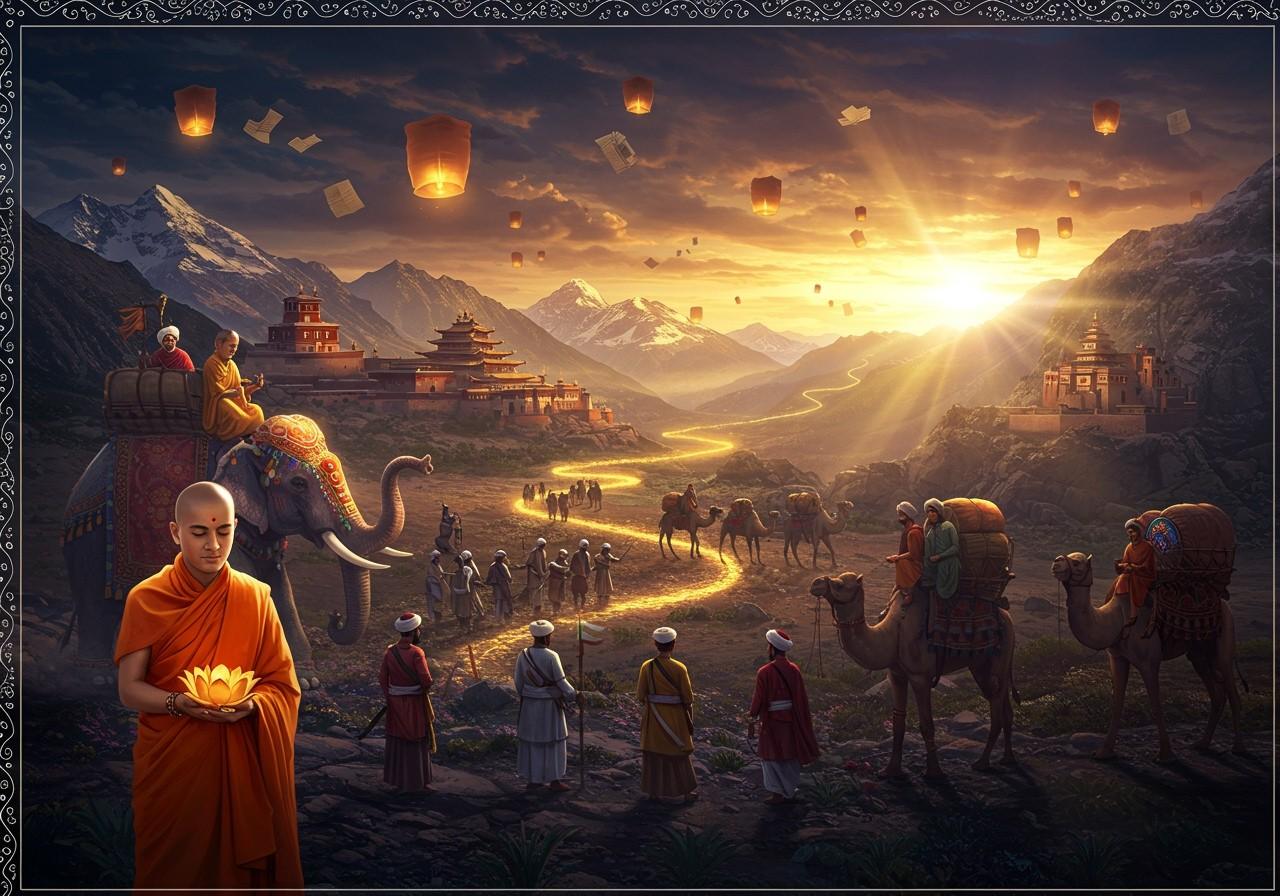
The Silk Road, renowned for its trade in goods, also served as a vital pathway for the exchange of culture and religion. Buddhism, originating in India, journeyed along this route, leaving a profound mark on numerous regions. This article delves into the spread of Buddhism through the Silk Road, emphasizing its impact on art, architecture, and cultural exchange. The term “Silk Road,” coined in 1877 by German geographer Ferdinand von Richthofen, encapsulates a network of routes crucial for disseminating Buddhism from India to regions like Central Asia and China. Key centers such as Gaochang became hubs for Buddhist traditions, shaped by the diverse cultures interacting along these trade routes. Buddhism’s positive stance on trade and commerce further facilitated its spread. However, the fall of the Tang Dynasty and the rise of Islam marked a decline, leading to the destruction of many Buddhist artifacts.
The Silk Road’s Role in Disseminating Buddhism
More than a mere trade route, the Silk Road facilitated cultural and religious exchange. Traders, monks, and pilgrims traversed its paths, carrying religious texts and relics. Monasteries and stupas, erected at strategic points, functioned as spiritual havens and resting places. Buddhist scriptures, translated into diverse languages, spread the teachings across various cultures. The Kushan Empire, ruling northern India and Central Asia, played a pivotal role in this dissemination. Buddhist missionaries like Kumarajiva facilitated the translation of texts into Chinese. The fusion of local traditions with Buddhist practices enriched the regions along the Silk Road.
Buddhist Art and Architecture Along the Silk Road
The Silk Road significantly influenced the evolution of Buddhist art and architecture. The Gandhara region, encompassing present-day Pakistan and Afghanistan, emerged as a hub where Greco-Roman and Indian artistic styles converged. The Bamiyan Buddhas in Afghanistan, tragically destroyed, exemplified this fusion. The Dunhuang cave temples in China, adorned with thousands of murals and sculptures, showcase a rich artistic legacy. The Ajanta Caves in India, with intricate frescoes and sculptures, reflect the Silk Road’s cultural interactions. Buddhist iconography, such as the lotus and wheel, transcended cultural boundaries. Stupas, pagodas, and monasteries adapted and evolved as they spread along the Silk Road, incorporating regional influences.
The Influence of Indian Buddhism on Other Cultures
Indian Buddhism profoundly impacted religious and cultural practices along the Silk Road. In China, it transformed local customs, giving rise to Chan (Zen) Buddhism. Mahayana Buddhism spread to East Asia, influencing Japan and Korea with Indian concepts and rituals. The Silk Road also facilitated the exchange of medical, astronomical, and literary knowledge from India. Central Asian monasteries utilized Sanskrit for religious texts, highlighting Indian influence. Indian Buddhist texts, translated into Central Asian languages, enriched literary traditions. Indian art and iconography are evident in Tibetan and Southeast Asian sculptures and paintings. The preservation and reinterpretation of Indian teachings demonstrate the enduring legacy of Buddhism along the Silk Road.
Poojn.in: Supporting Your Buddhist Practice
Poojn.in offers a wide selection of items for Buddhist rituals and practices, honoring the sacred connection between India and Buddhism. Enhance your spiritual journey with our authentic products:
-
Prayer Beads (Malas): Find traditional malas crafted from various materials, perfect for counting mantras and deepening your meditation practice. We offer malas in different lengths and styles to suit your preferences.
-
Incense Sticks: Create a serene atmosphere with our collection of incense sticks. Choose from a variety of fragrances to enhance your meditation space and promote tranquility.
-
Meditation Cushions: Support your posture and comfort during meditation with our comfortable cushions. We offer cushions in various sizes and fillings to suit your needs.
-
Singing Bowls: Experience the calming vibrations of our pure copper and brass singing bowls, ideal for meditation and sound healing practices. Our bowls are crafted with precision to produce resonant tones.
-
Buddha Statues: Adorn your home shrine with our carefully selected Buddha statues, crafted by skilled artisans using traditional methods. We offer statues in various sizes and materials.
Visit Poojn.in to discover these authentic Buddhist items and have them delivered conveniently to your doorstep, simplifying your spiritual practice and honoring Buddhism’s rich heritage in India.
Conclusion: The Enduring Legacy
The Silk Road served as a bridge connecting diverse cultures and spiritual traditions. Buddhism’s passage along this historic route profoundly impacted the regions it touched, from the creation of magnificent art and architecture to the fusion of local traditions. The Silk Road enriched Buddhist practices and disseminated its teachings far and wide. The influences of the Kushan Empire and artistic marvels like the Bamiyan Buddhas and Dunhuang Cave Temples stand as testaments to this rich exchange. Indian Buddhism’s influence continues to resonate through architectural styles, religious practices, and cultural traditions across Asia. As we reflect on this sacred journey, we honor the enduring legacy of Buddhism and the Silk Road, a remarkable connection between India and the world, demonstrating the power of cultural and spiritual exchange.


